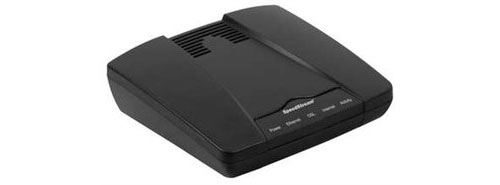Last month I got a new computer. Nothing top-of-the-line. Nothing bleeding edge. Nothing terribly fancy, just an Acer Extensa 5620 with a gigabyte of RAM and Windows Vista Home Premium. I got a lot of raised eyebrows when friends and coworkers found out I’m running Vista now. There have been a lot of prejudices and rumors about this operating system, so I’ll address a couple today.
- Things aren’t where they used to be. Yes, new things tend to be different than old things. Change can be confusing and disorienting at times.
- Vista prompts you to give permission for every little thing. This is something everybody has known about Vista from its earliest release candidates. Well, it just isn’t true. I’m not a Microsoft apologist, but I haven’t had to give anything special permission to do anything in days. When you’re installing new software, you’re exposing yourself to some security risk, so Vista prompts you to confirm that you really intend to do it. If you want to completely reset your Internet Protocol interface, maybe something sketchy is afoot. Maybe you install four or five programs a day on your box, but I don’t, and neither do most people. Even geeks.
- Vista is a resource hog that requires way more processor speed, RAM, and hard drive space than is reasonable. This one’s totally true. Right out of the box, with minimal junkware I’m using ~800MB of RAM before I explicitly launch a thing. With only a gigabyte of physical memory, that leaves me pretty pinched. Loading up takes a while, longer with my dual-core processor than my clunky old workstation takes to load XP. At first, it seemed like running various applications took too long, also, but it looks like Vista has adapted itself pretty handily to my habits after a couple weeks. Vista is supposed to optimize its file system over time, and my experience tends to confirm that this isn’t all hype.
- Vista is a pain to upgrade to. Wouldn’t know. My old computer has a perfectly good OS on it already. Why would I upgrade it? The license for my new laptop was bundled into the price of the hardware, so whoopity-doo.
- You should really just run Ubuntu instead. Sure, I’ll agree to use Linux desktops when you agree to use Microsoft servers. Are you nuts?
- Most of the new features are things other systems have had for ages. Of the features I’m enjoying in Vista (such as the contextual search when browsing folders), this is completely true. I understand that cars had steering wheels before Toyota made my car, but that doesn’t detract from the value I find in having one.
- Widgets are a resource hog. True, but it’s 21° and partly cloudy at Kirkwood right now, and I know that by glancing to the right a little from where I’m typing.
- You should wait for SP1. Service packs are good, you’ll get no argument from me on that point. That said, all indications I’ve seen are that the updates in the service pack are mostly performance tweaks and trying to get a handle on some of the compatibility problems that have plagues the Vista release. I welcome the tweaks and have no compatibility issues of my own. Your mileage may vary.
Overall, I like Vista Home Premium so far. It’s going to take years before the new graphics engine is well and truly embraced by the software industry, but spending a little time as a relative early-adopter isn’t going to cause you many fits unless you insist on dragging your old hardware along with you, or you have the misfortune of being an accountant; most tax software doesn’t like to handle old forms.


